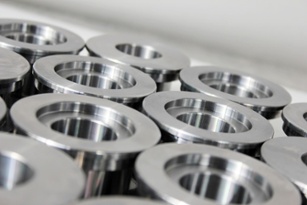
2 Essential Ways An OEM Supplier Prevents Defective Part Setbacks
February 12, 2016
 An unreliable OEM supplier can deliver metal parts that are defective in a variety of ways. Finishing may be faulty in appearance or corrosion resistance performance. Weld and forming defects often appear as cracks. Or, machining defects could include poorly sized and missing features.
An unreliable OEM supplier can deliver metal parts that are defective in a variety of ways. Finishing may be faulty in appearance or corrosion resistance performance. Weld and forming defects often appear as cracks. Or, machining defects could include poorly sized and missing features.
Your custom metal fabrications also may not fit into your finished product properly. This usually means the parts were not made to your specifications. You’ll notice the defects on your assembly line, and they are likely to cause immediate line disruption at additional cost.
While production halts are bad enough, your company may waste time manufacturing products with defective parts, and then have to undo all of your work when you notice a defect. Worse yet, you may deliver a finished product with defective parts to customers. Safety issues are likely to cause accidents or warranty claims.
With so much at stake, you need a reliable supplier that doesn’t compromise on part quality. The right metal manufacturer prevents defective part setbacks in the following two ways:
1. Addressing Defect Problems At The Source
Expert welding contractors use a QMS program to document issues when they arise. Whether the problem originated with a material supplier or your manufacturer’s internal processes, an internal team is able to identify potential causes. This strategy helps your supplier catch problems at the source and prevent future defects from coming off the production line.
You may be surprised that employee error is not a true cause of defective parts. While it can happen, your supplier’s process should be set up in a way to prevent employee error. The question should be, “Why did the process allow an employee to make an error?”
Consider this example: It’s not possible to insert a USB key into your computer the wrong way because it was designed so only one way to insert it exists. Good process design uses the same principle and controls.
The same rule applies to equipment malfunction. Certainly machinery can fail, but your supplier would do better to question why it wasn’t maintained properly. The malfunction is probably a symptom of a larger problem.
2. Prevention, Testing And Early Identification
An OEM supplier supports your streamlined production by delivering only high-quality parts. Your metal manufacturer should take the following measures to minimize its number of defective metal parts:
- In-process controls
- Proper training
- Written procedures
- Mistake proofing
- Accountability
Detecting defective parts takes place at many places along the production line. Your supplier’s workforce can detect defects visually, but standard measuring techniques, tools and gauging are important.
“Go/no go” attribute gauging requires metal parts to pass one test using an inspection tool and fail another. The tests determine that the part fulfills its function and doesn’t do what it’s not supposed to do, playing a vital role in quality control processes.
In the event that a defect is made, the part should not be passed downstream. For example, a low-quality component made using industrial fabrication services should not go through the welding or machining stages. So, your supplier should work to detect problem parts as early as possible.
Fabrication, machining and welding solutions are only valuable if they function perfectly within your finished product. You need an OEM supplier that’s considerate of your reputation for brand quality and doesn’t jeopardize your customer relationships by supplying substandard parts. Before you choose a supplier partner, make sure it has a strong focus on quality control.
Ready to partner with a supplier that prioritizes your business goals? Schedule a consultation today.
You Might Be Interested In
Industrial Fabrication
October 29, 2019
Robotics in Tomorrow's OEM Supply ChainQuality
December 9, 2016
What Should Your OEM Supplier Do To Help You Reach Your Goals?